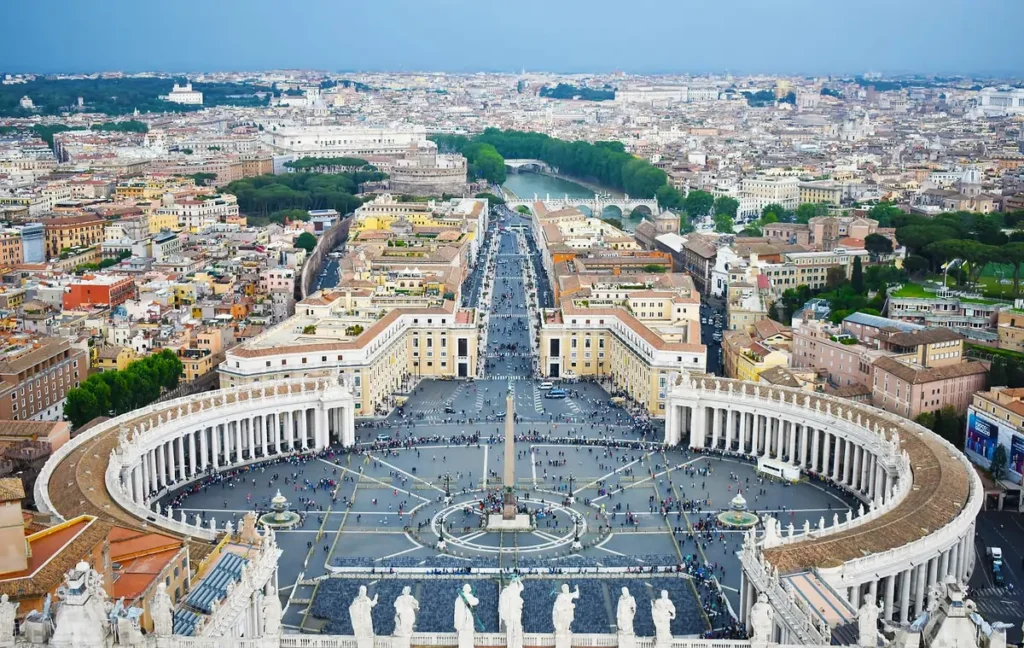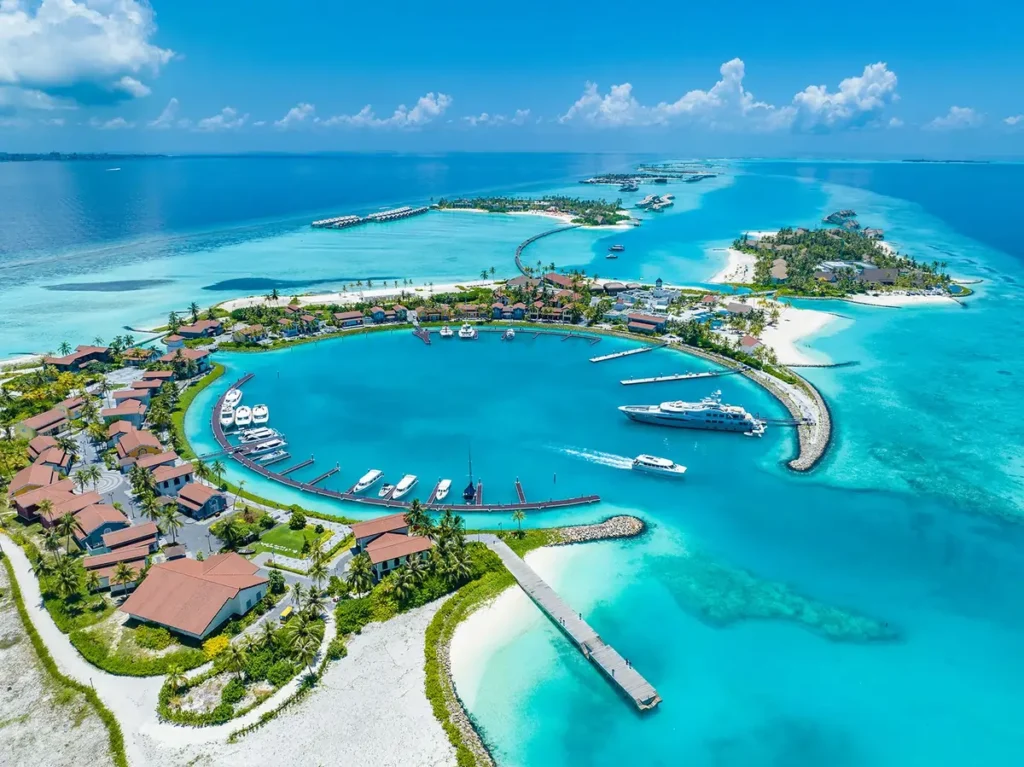Introduction:
Did you know that some countries are so small you can explore the entire nation in a single day? While we often hear about vast nations like Russia, China, and the United States, many of the world’s most unique and fascinating places are tiny. Some small countries are islands surrounded by turquoise waters, while others are nestled in the middle of larger nations. Each has its distinct geography that sets it apart, from rugged mountains to historic city-states.
This article will explore the world’s smallest countries, their distinctive geographical features, and what makes them special. Whether you’re a geography lover or just curious about the world’s tiniest nations, these small countries offer big stories!
Read also: Unraveling Confusion: Country Flags That Look Strikingly Similar
1. Vatican City
Overview: At just 0.17 square miles, Vatican City is the world’s smallest country. Surrounded by the city of Rome, this independent city-state is home to the Pope and serves as the spiritual and administrative center of the Roman Catholic Church.

- Key Fact: Vatican City has about 800 residents but welcomes millions of tourists annually.
- Unique Geography: Though tiny, Vatican City contains St. Peter’s Basilica, the Vatican Museums, and the famous Sistine Chapel with Michelangelo’s ceiling.
Why It’s Unique: Despite its size, Vatican City is one of the world’s most culturally and religiously significant places. Its architecture and art make it a must-visit destination.
2. Monaco
Overview: Known for its glitzy casinos and luxurious yachts, Monaco is another smallest country. It covers just 0.78 square miles but boasts some of the most expensive real estate on the planet. Located on the French Riviera, this tiny country borders France and the Mediterranean Sea.
- Key Fact: Monaco has a population of over 38,000, making it the most densely populated country in the world.
- Unique Geography: Monaco’s coastline stretches just 2.5 miles, but it’s packed with marinas, skyscrapers, and the famous Monte Carlo Casino.
Why It’s Unique: Monaco is a playground for the rich and famous, but it’s also known for its Formula One Grand Prix, which races through the city streets yearly.
Read also: Shocking: Mangroves are Ignored, and Our Coasts Are Paying the Price
3. Nauru
Overview: The smallest island nation in the world, Nauru covers just 8.1 square miles in the Pacific Ocean. Once known for its phosphate mining, Nauru’s economy has struggled in recent years but remains a peaceful, quiet island nation.
- Key Fact: Nauru has no official capital, though Yaren is the largest district and functions as the government center.
- Unique Geography: The island’s interior is mostly barren due to the extensive phosphate mining, but the coastline offers pristine coral reefs and beaches.
Why It’s Unique: Nauru’s isolation and tiny size give it a unique charm, but its history of environmental degradation from mining is a cautionary tale about natural resource management.
Read also: Open-Cast Mining: Profit at the Expense of Our Environment
4. Tuvalu
Overview: Another tiny Pacific island nation, Tuvalu, spans just 10 square miles and comprises nine atolls and islands. It is one of the most famous and smallest countries in the world. With a population of around 11,000, Tuvalu is one of the least populous countries in the world.

- Key Fact: Tuvalu is one of the lowest-lying countries, with its highest point just 16 feet above sea level.
- Unique Geography: Tuvalu’s islands are surrounded by coral reefs and are home to diverse marine life, making it a popular destination for snorkeling and diving.
Why It’s Unique: Due to its low elevation, Tuvalu is particularly vulnerable to rising sea levels caused by climate change. This makes it one of the most at-risk countries in the world.
Read also: The Reality of Rising Sea Levels and How It Affects Us
5. San Marino
Overview: San Marino, founded in 301 AD and surrounded by Italy, is one of the world’s oldest republics. Covering 24 square miles, it is one of the smallest countries in the world. It is famous for its historic architecture and medieval heritage.
- Key Fact: San Marino’s population is around 34,000, making it one of the wealthiest countries per capita.
- Unique Geography: The country is on Mount Titano, offering stunning views of the surrounding Italian countryside.
Why It’s Unique: Despite its size, San Marino has maintained its independence for over 1,700 years, making it a unique example of a microstate thriving within a larger country.
6. Liechtenstein
Overview: Nestled between Switzerland and Austria, Liechtenstein is a tiny alpine nation covering 62 square miles and another smallest country in the world. Known for its stunning mountain scenery, this principality is one of the wealthiest nations in the world.
- Key Fact: Liechtenstein has no military and relies on Switzerland for defense.
- Unique Geography: The country is almost entirely mountainous, with the Rhine River forming its western border.
Why It’s Unique: Liechtenstein is famous for its castles, charming villages, and alpine activities like skiing and hiking. Its pristine natural environment and high standard of living make it a hidden gem in Europe.
7. Saint Kitts and Nevis
Overview: Covering 104 square miles, Saint Kitts and Nevis is the smallest country in the Western Hemisphere. This two-island nation in the Caribbean is known for its lush rainforests, beautiful beaches, and vibrant history.
- Key Fact: Saint Kitts and Nevis gained independence from Britain in 1983 but still recognized the British monarch as their head of state.
- Unique Geography: The islands are volcanic, with Mount Liamuiga towering at 3,792 feet above sea level.
Why It’s Unique: The islands offer a mix of historical sites, like old sugar plantations and natural beauty, making it a top destination for eco-tourism.
Read also: Rainforest Food Web: Brutal or Beautiful? Explore the Jungle’s Hunger Games
8. Maldives
Overview: Spread over 115 square miles in the Indian Ocean, the Maldives comprises 1,192 coral islands grouped into 26 atolls. Famous for its overwater bungalows and crystal-clear waters, the Maldives is a popular honeymoon destination.

- Key Fact: The Maldives has a population of around 530,000, making it one of the most sparsely populated countries relative to its area.
- Unique Geography: The country’s average elevation is just 4.9 feet, making it the lowest country in the world.
Why It’s Unique: Like Tuvalu, the Maldives is at risk due to rising sea levels, but its picturesque islands and rich marine biodiversity make it one of the world’s top travel destinations.
Read also: Marine Food Web: 5 Threats to the Backbone of the Oceans
9. Malta
Overview: Located in the Mediterranean Sea, Malta covers just 122 square miles but boasts a rich history dating back to the Neolithic era. Various cultures, including the Phoenicians, Romans, and Arabs, have influenced Malta.
- Key Fact: Malta has a population of around 515,000, making it one of Europe’s most densely populated countries.
- Unique Geography: The country comprises three main islands—Malta, Gozo, and Comino—with rugged coastlines and stunning beaches.
Why It’s Unique: Malta’s strategic location in the Mediterranean has made it a crossroads of cultures for thousands of years, and its historic architecture reflects this rich heritage.
10. Grenada
Overview: Known as the “Island of Spice” due to its production of nutmeg, Grenada is a small island country in the Caribbean, covering just 133 square miles. With a population of about 112,000, Grenada is famous for its natural beauty and spice plantations.
- Key Fact: Grenada is home to the world’s first underwater sculpture park.
- Unique Geography: The island is volcanic and features lush rainforests, stunning waterfalls, and beautiful beaches.
Why It’s Unique: Grenada’s combination of natural wonders, like its underwater sculpture park, and its status as a major spice producer make it one of the most unique countries in the Caribbean.
Read also: Explosive Threat: Top 10 Most Dangerous Volcanoes on Earth
Quick Facts Overview:
| Country | Area (sq miles) | Unique Feature |
| Vatican City | 0.17 | Smallest country in the world, home to St. Peter’s Basilica |
| Monaco | 0.78 | It is densely populated, famous for luxury, and the Grand Prix |
| Nauru | 8.1 | Smallest island nation with no official capital |
| Tuvalu | 10 | One of the lowest-lying countries, vulnerable to sea levels |
| San Marino | 24 | The oldest republic, located on Mount Titano |
| Liechtenstein | 62 | Alpine country with castles and no military |
| Saint Kitts and Nevis | 104 | Caribbean island nation with volcanic origins |
| Maldives | 115 | Over 1,000 coral islands, famous for resorts and low-elevation |
| Malta | 122 | Mediterranean island with a rich cultural history |
| Grenada | 133 | Known for nutmeg production and underwater sculptures |
Conclusion:
These tiny nations may be small but rich in culture, history, and natural beauty. From the bustling streets of Monaco to the tranquil beaches of Tuvalu, each offers a unique experience. Whether it’s the mountains of Liechtenstein or the coral reefs of the Maldives, these small countries prove that size doesn’t determine significance.
FAQs:
1. Why is Vatican City the smallest country in the world?
Vatican City is the smallest country due to its tiny area of just 0.17 square miles. It functions as the spiritual and administrative center of the Roman Catholic Church.
2. What makes Tuvalu unique?
Tuvalu is unique for its low elevation, which makes it highly vulnerable to rising sea levels, and its remote location in the Pacific Ocean.
3. Why is Monaco so densely populated?
Monaco’s small size and status as a tax haven have attracted wealthy residents, leading to high population density within its limited space.
4. How do the Maldives manage rising sea levels?
The Maldives have implemented coastal protection measures and are working on sustainability initiatives to adapt to the challenges posed by climate change.
5. What is special about the geography of San Marino?
San Marino’s location on Mount Titano gives it breathtaking views, and its well-preserved medieval architecture makes it a UNESCO World Heritage Site.





